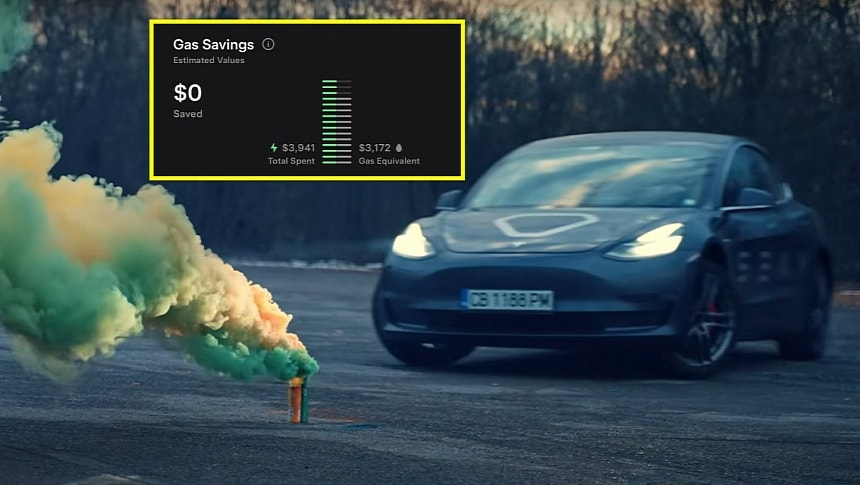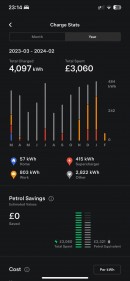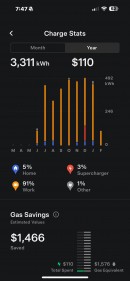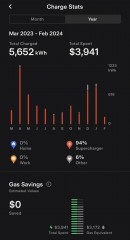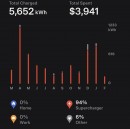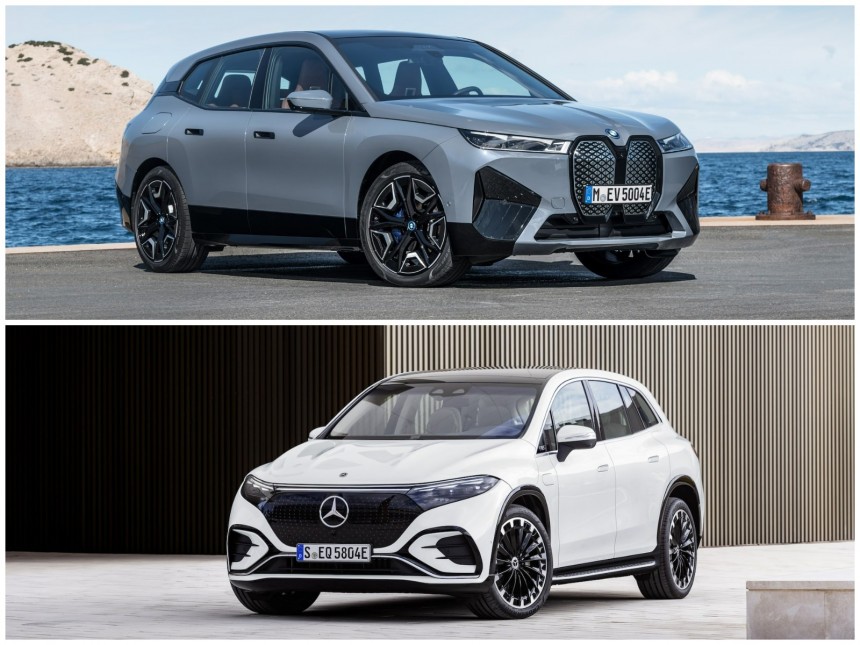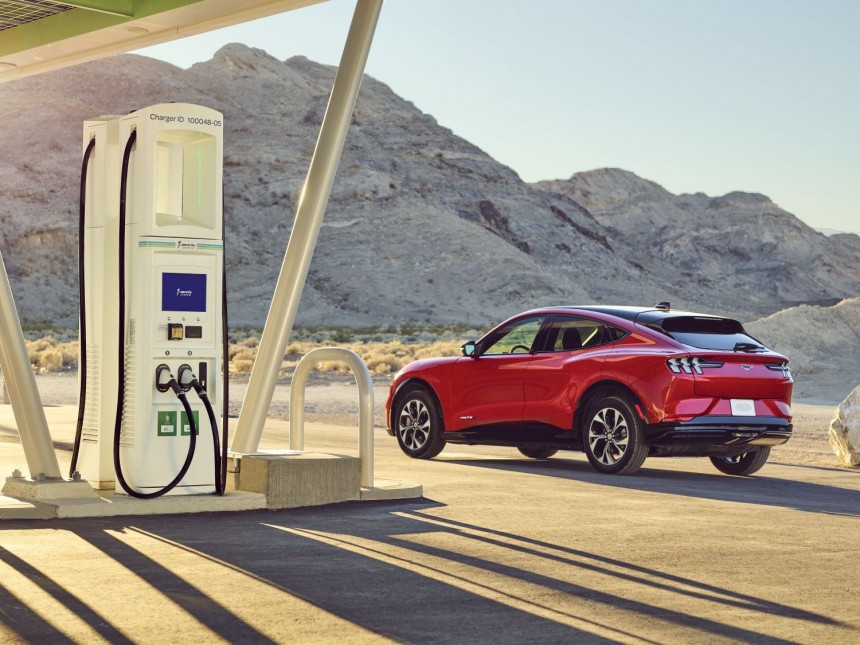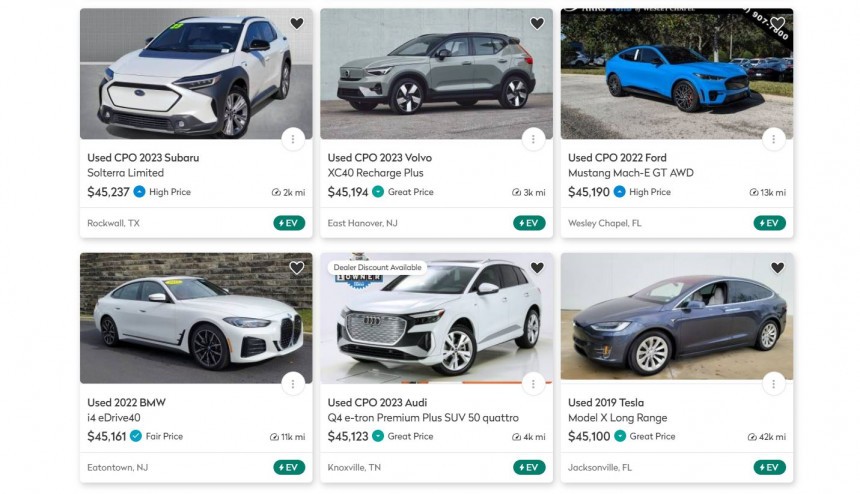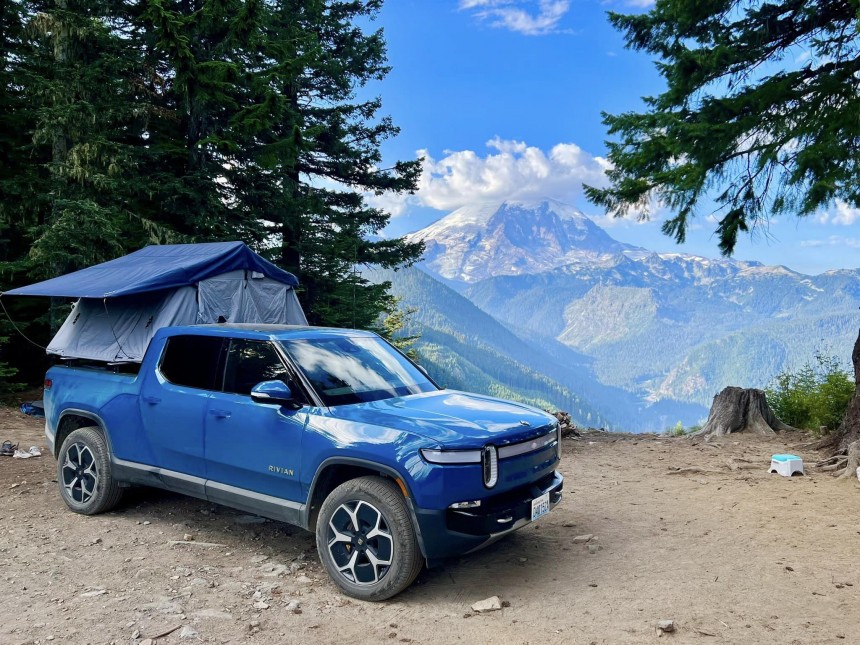It hurts to say this as a plug-in hybrid owner actively looking to embrace zero-emission mobility fully, but do not buy an all-electric vehicle if you don't have the means to charge at home overnight, at work during office hours, or for free at DC dispensers. The numbers do not lie.
Tesla actively fought the conservative automotive industry and won. It brought forward a different drivetrain, a new cabin design philosophy, better software, and a simplified sales model. It even made the right investment in a high-power charging network ahead of everybody else.
Many people learned to love the disruptor's proposition, even though it didn't gain a reputation for build quality. After 12 years since the first-gen Model S debuted, all that effort culminated in the Tesla Model Y becoming the world's best-selling car in 2023. The EV maker won – for now, at least.
Legacy automakers tried to play catch-up and introduced a few interesting competitors. The BMW iX, for example, is a good EV. Its looks may not do it any favors, but overall, it is a nice ride. It represents the Germans well.
The Mercedes-Benz EQS SUV is another one. It may look like an aerodynamics expert's wet dream, but it embodies what the three-pointed star brand is all about without the emissions of a gas- or diesel-powered engine.
Meanwhile, startups like Rivian, Fisker, and Saudi-financed Lucid are trying their best to survive and maybe even thrive.
In the US, there are over four million all-electric and plug-in hybrid vehicles on the road. Over 30% were added to the total count last year. BMW is leading the charge when it comes to legacy brands convincing their customers about switching to zero-emission driving: 12.5% of the Bavarian brand's sales were all-electric in 2023. It was followed by VW (11.5%), Mercedes-Benz (11.4%), Audi (11%), and Volvo (10.8%).
Those percentages show automakers poured billions into new car platforms, and customers aren't keen on buying these new-age products. There's a problem somewhere. Demand doesn't meet supply.
It might be that there aren't enough public fast chargers for everybody or that EVs depreciate like there's no tomorrow. The Audi e-tron GT can attest to that. It could also be about high insurance rates (unless you agree to have your driving behavior monitored constantly), poor repairability, and many other issues that plague almost all zero-emission cars, such as the 12V battery failing out of nowhere.
Rivian just introduced a new version of the R1T, which is a capable and well-designed battery-electric pickup truck. A dual-motor and Standard+ configuration costs $73,000 before taxes and incentives. That gets you an EV that can cover up to 315 miles on a single charge and develop 533 hp. Since it's eligible for half of the EV tax credit, the price drops to $69,250.
But it gets even better. Lease it, and you can get the full EV tax credit. Buy it when the term is up, and you won't have to cover any depreciation or excessive mileage costs. It looks appetizing, doesn't it?
Tesla also offers enticing lease deals but doesn't allow you to own the EV at the end of the contract. Still, $450 per month for a refreshed Model 3 Long Range doesn't sound bad at all.
Then, there's the secondary market. You could buy a 2012 Nissan Leaf for around $3,000. But that's a 12-year-old car with little life left in it. Battery degradation is inevitable, which means the range on a full charge is going to be severely affected.
If you have the money, Model S Plaids with around 12-25,000 miles on the clock are available for about $70,000 when writing. Keep in mind that we're talking about a car with over 1,000 hp that can go from zero to 60 mph in two seconds if it has enough juice in the battery and has finished preconditioning for the sprint. If you want a really fast four-door sedan built by an established manufacturer, a Porsche Taycan or an Audi e-tron GT can become yours for less than $55,000.
Those are some interesting prices to look at, considering the average cost of a new car increased to over $48,000 in 2023. But should you pick one? Well, it depends. Are you willing to deal with higher running costs? Then, go ahead and buy your favorite EV. There's no need to discuss it further.
But if you like to keep expenses under control and maximize the worth of every dollar, hear me out: only buy an EV if you can charge it at home overnight, at work during office hours, or at no cost at AC or DC dispensers. Otherwise, you're exposing yourself to a situation where buying and using a gas-powered car would've been much cheaper.
A 2021 Tesla Model S Plaid owner spent $3,941 on Supercharging in almost a year. He used the EV maker's high-power charging network for 94% of all the battery replenishing sessions. According to the brand's calculations, he could have pocketed $769 if he drove a gas-powered sedan.
That difference would have bought the EV owner around 248 gallons of gas. A BMW M5 Competition has an EPA-rated combined fuel economy of 17 mpg. That means they could have covered 4,216 miles more with the high-performance V8-powered German sedan than they did with the EV.
Another Tesla Model 3 owner who lives in the UK spent £3,060 ($3,864) on replenishing their EV's high-voltage energy storage unit over the span of 11-something months. Were they to fill up a gas-powered equivalent, they would have spent £2,321 ($2,931). Again, that's according to Tesla's own measurements. They would have covered the same distance and saved £739 ($933).
Unlike the American Model S Plaid buyer, this British Tesla owner moved from a house with a parking space that had a charger to a flat where the private parking didn't offer such a perk. So, they mostly charged at a gym where a kWh cost almost £0.80 ($1).
Charging for free is amazing and can save you a lot of money in the long run. It'll even make switching jobs a lot harder. Pay attention, business owners. You might want to add a few Level 2 chargers in the parking lot.
If you can't charge your EV at work, the other ideal scenario is living in a house with a garage or a driveway and having solar panels on the roof. You don't even need a Level 2 charger. A normal household outlet will do. Plug in when you arrive home, and you're doing two great things: filling the EV's battery with renewable energy (which lowers your carbon footprint and maximizes your car's role in fighting climate change) and not paying for the energy needed to commute. There's an initial cost to adding solar panels, but they might help you save some money in the long run.
But there's another smart thing you can do if you like saving money and really want an all-electric ride. Audi, BMW, Ford, Genesis, Hyundai, Kia, Lucid, Mercedes-Benz, Porsche, and VW struck a deal with Dieselgate-born Electrify America to offer their customers various types of deals that include free fast charging. Lease an eligible model for the duration of the perk, stick to the rules, and you won't pay for electricity.
In conclusion, don't buy an EV if you're forced to charge only at locations where a kWh is pricey. Don't want to waste more money than necessary. Some stations have even started charging for parking on top of the electricity.
A gas station won't charge you for two different services when you're filling up with gas. However, there's no safe and economical way to make your own fossil fuel at home. Choose wisely.
Many people learned to love the disruptor's proposition, even though it didn't gain a reputation for build quality. After 12 years since the first-gen Model S debuted, all that effort culminated in the Tesla Model Y becoming the world's best-selling car in 2023. The EV maker won – for now, at least.
Legacy automakers tried to play catch-up and introduced a few interesting competitors. The BMW iX, for example, is a good EV. Its looks may not do it any favors, but overall, it is a nice ride. It represents the Germans well.
The Mercedes-Benz EQS SUV is another one. It may look like an aerodynamics expert's wet dream, but it embodies what the three-pointed star brand is all about without the emissions of a gas- or diesel-powered engine.
An ever-changing landscape
Japanese brands are laggards, though. Rides like the Toyota bZ4x, the Mazda MX-30, or the Honda e proved their makers didn't understand what customers wanted or needed. Toyota is also pretty vocal about how the transition to zero-emission personal mobility is sort of a fad that doesn't coincide with what buyers actually want. It's a stance it kept for a while, and it was almost ridiculed for it. Now, Ford and General Motors hit the brakes on EV production because they noticed a drop in demand.Meanwhile, startups like Rivian, Fisker, and Saudi-financed Lucid are trying their best to survive and maybe even thrive.
In the US, there are over four million all-electric and plug-in hybrid vehicles on the road. Over 30% were added to the total count last year. BMW is leading the charge when it comes to legacy brands convincing their customers about switching to zero-emission driving: 12.5% of the Bavarian brand's sales were all-electric in 2023. It was followed by VW (11.5%), Mercedes-Benz (11.4%), Audi (11%), and Volvo (10.8%).
Those percentages show automakers poured billions into new car platforms, and customers aren't keen on buying these new-age products. There's a problem somewhere. Demand doesn't meet supply.
Going to the green side
But let's presume it is time to buy a new set of wheels, and you haven't read all of the above. However, you saw online or heard from friends that EVs can be better than their traditional counterparts.Rivian just introduced a new version of the R1T, which is a capable and well-designed battery-electric pickup truck. A dual-motor and Standard+ configuration costs $73,000 before taxes and incentives. That gets you an EV that can cover up to 315 miles on a single charge and develop 533 hp. Since it's eligible for half of the EV tax credit, the price drops to $69,250.
But it gets even better. Lease it, and you can get the full EV tax credit. Buy it when the term is up, and you won't have to cover any depreciation or excessive mileage costs. It looks appetizing, doesn't it?
Tesla also offers enticing lease deals but doesn't allow you to own the EV at the end of the contract. Still, $450 per month for a refreshed Model 3 Long Range doesn't sound bad at all.
Then, there's the secondary market. You could buy a 2012 Nissan Leaf for around $3,000. But that's a 12-year-old car with little life left in it. Battery degradation is inevitable, which means the range on a full charge is going to be severely affected.
Keeping it real
But a commuting appliance doesn't have to be extra luxurious or insanely fast. A 2023 Kia EV6 GT-Line, a 2023 Volvo C40 Recharge eAWD, a dual-motor 2022 Hyundai Ioniq 5, a 2022 Mercedes-Benz EQB 4Matic, a 2022 Tesla Model Y Long Range, a 2022 Audi Q4 e-tron quattro, a 2019 Tesla Model X 100D, and a dual-motor VW ID.4 are all sub-$40,000 cars on the used market.Those are some interesting prices to look at, considering the average cost of a new car increased to over $48,000 in 2023. But should you pick one? Well, it depends. Are you willing to deal with higher running costs? Then, go ahead and buy your favorite EV. There's no need to discuss it further.
But if you like to keep expenses under control and maximize the worth of every dollar, hear me out: only buy an EV if you can charge it at home overnight, at work during office hours, or at no cost at AC or DC dispensers. Otherwise, you're exposing yourself to a situation where buying and using a gas-powered car would've been much cheaper.
A 2021 Tesla Model S Plaid owner spent $3,941 on Supercharging in almost a year. He used the EV maker's high-power charging network for 94% of all the battery replenishing sessions. According to the brand's calculations, he could have pocketed $769 if he drove a gas-powered sedan.
That difference would have bought the EV owner around 248 gallons of gas. A BMW M5 Competition has an EPA-rated combined fuel economy of 17 mpg. That means they could have covered 4,216 miles more with the high-performance V8-powered German sedan than they did with the EV.
Unlike the American Model S Plaid buyer, this British Tesla owner moved from a house with a parking space that had a charger to a flat where the private parking didn't offer such a perk. So, they mostly charged at a gym where a kWh cost almost £0.80 ($1).
Upsides and decisions
But here's the other side of the coin: someone who charged almost exclusively at work for free saved over $1,440 while adding 3,311 kWh to their Model Y. They rarely plugged in at home or at a Supercharger. That's the ideal case.Charging for free is amazing and can save you a lot of money in the long run. It'll even make switching jobs a lot harder. Pay attention, business owners. You might want to add a few Level 2 chargers in the parking lot.
But there's another smart thing you can do if you like saving money and really want an all-electric ride. Audi, BMW, Ford, Genesis, Hyundai, Kia, Lucid, Mercedes-Benz, Porsche, and VW struck a deal with Dieselgate-born Electrify America to offer their customers various types of deals that include free fast charging. Lease an eligible model for the duration of the perk, stick to the rules, and you won't pay for electricity.
In conclusion, don't buy an EV if you're forced to charge only at locations where a kWh is pricey. Don't want to waste more money than necessary. Some stations have even started charging for parking on top of the electricity.
A gas station won't charge you for two different services when you're filling up with gas. However, there's no safe and economical way to make your own fossil fuel at home. Choose wisely.
